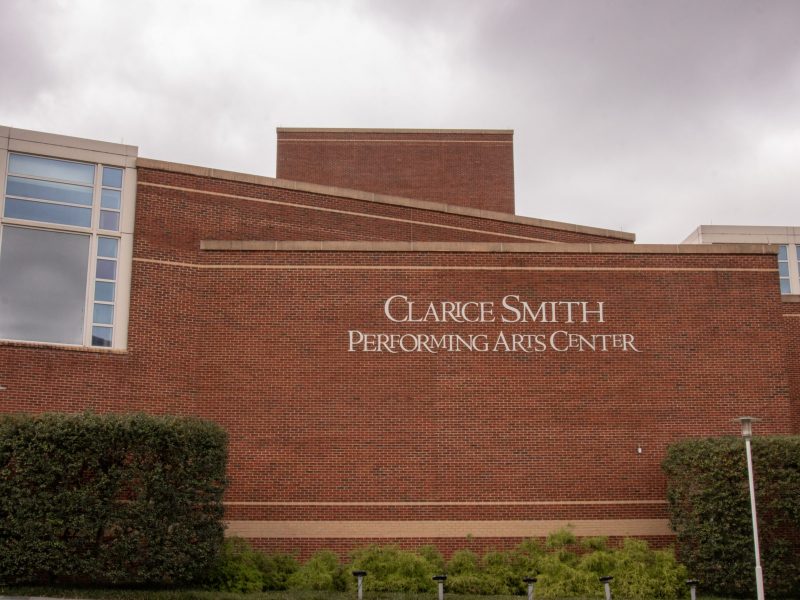Art jumps to life when University of Maryland community members interact with “The Digital Landscape” exhibit in Stamp Student Union Gallery.
The exhibit examines the tension between the digital and human worlds through animation, installation, video, photographs, machine learning and augmented reality.
“All of these artists are kind of engaging with the way that different technology mediates our experience in our physical space,” Tara Youngborg, the exhibit’s curator and Stamp Gallery’s manager said.
“‘TIRED?’ ‘NO PEP? ‘FEET HURT?’ ‘STEP UP’ FOR A ‘PICK UP.’ ”
These questions are etched onto artist Chris Combs’ piece “Insert 25 Cents to Feel Something,” enticing visitors to try it out. When they insert the coin, a cat springs up on a circular screen on the box’s side. The cat meows and then the screen goes blank.
“It was really exciting. I wanted to do it again,” Rachel Schmid-James, a junior art history and classical humanities major who visited the gallery exhibit, said. “It’s almost the cycle of addiction in a way.”
[Mavis Staples celebrates her 74-year career at Clarice concert]
Combs wrote in his artist statement that he aimed to bring awareness to the constant dopamine cycle social media creates while introducing the currency that rules the internet: Users’ time and attention.
Billy Friebele’s piece, “Habitat,” intertwines generative artificial intelligence with art. The piece consists of an underwater video of an inkjet printer in the Anacostia River played on a television screen.
The video is accompanied by two pieces replicated by images Friebele generated with AI. He collected the printer from the polluted river, deconstructed it, and used its circuit boards and natural materials for the pieces.
Friebele’s use of AI fits with Youngborg’s vision of the exhibit, which focuses on the recent boom of AI, machine learning and creative applications, all of which have embedded themselves into humans’ everyday lives.
An untitled digital piece by Ally Christmas sits on the gallery wall. A glitched image of a subject with copper hair and blue eyes is projected onto a phone screen.
“My virtual self and I conjoin to create a new kind of zombie,” Christmas’ artist statement read.
[‘The Substance’ delivers on a satirical, gory good time]
As students walk through the gallery, they are unaware that Combs’ installation, “Pollination,” screenshots their faces and records their voices.
The piece imitates a flower’s shape and clusters white and blue bulbs between wire petals. Intruding upon the students’ privacy, “Pollination” speaks to surveillance, Combs said. It exemplifies how human data is collected on various platforms and services.
“I would love if it made people just think a little tiny bit extra about installing that one free app,” Combs said. “If someone just took an extra moment to be like, ‘Wait, why am I having them have my data?’”
“The Digital Landscape” exhibit blends art and technology to demonstrate how both venues connect while showing viewers subtle ways technology can be harmful if not used cautiously.
It’s up to viewers to decide the extent to which they let technology take over their lives.



